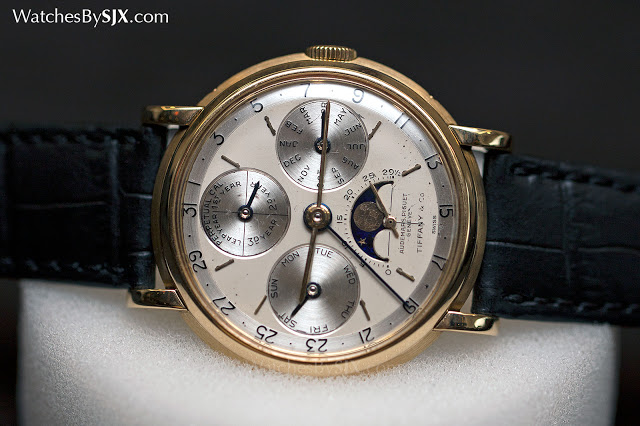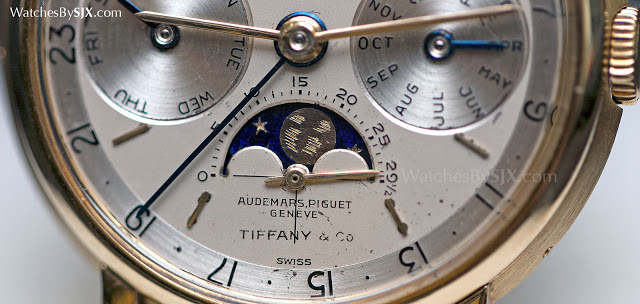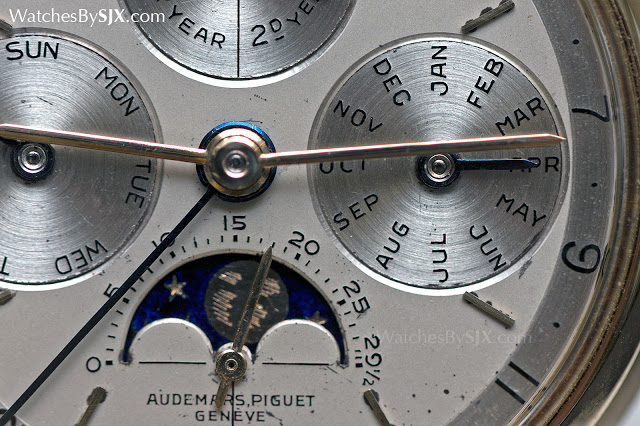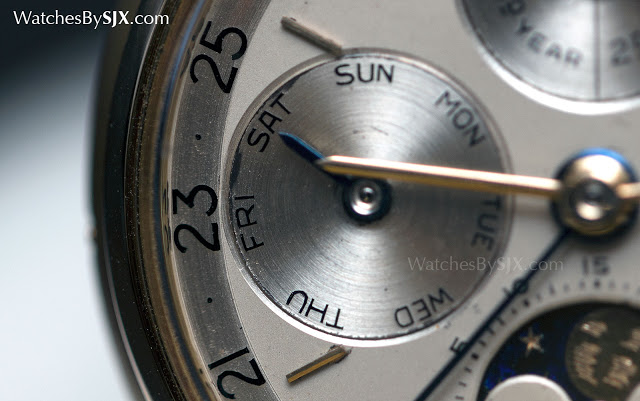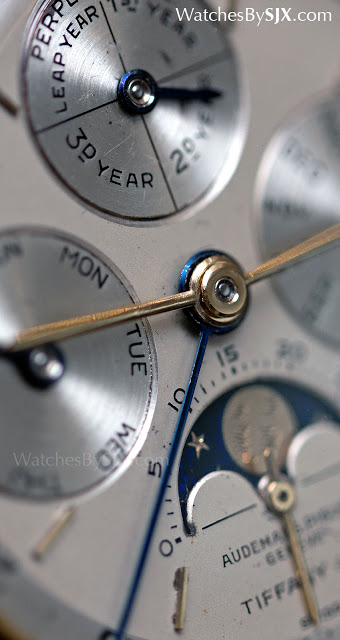The Audemars Piguet Royal Oak Chronograph.
This is a wristwatch that’s so known to many of you, perhaps it doesn’t require much of an analysis — but this really is HODINKEE and you’ll be able to believe you are gonna get you. The Royal Oak Chronograph is a wristwatch that has tens of thousands of fans all over the world, and a couple of detractors, also. The Royal Oak and Royal Oak Offshore families often appeal to quite different people, but I’ll get to that soon. In this review, I tackle a mainstay in the AP lineup, and also an interesting piece of haute horology, though one without its in-house motion. I will look at just how this 41mm column-wheel, vertical clutch chronograph wears, and if the matter of where the movement came out of is even something worth noting in any way. That is your HODINKEE Week About The Wrist with the Audemars Piguet Royal Oak Chronograph, and it’s one worth spending some time with.AP is really a unique watch manufacture. It is one of the few worldwide haute horology brands that stays in the hands of its founding family, with several members of the Audemars family still sitting on its board. Consider the fact that Vacheron Constantin and A. Lange & Söhne are equally owned by the Richemont Group (which owns everything from Cartier and Panerai into Alfred Dunhill, luggage maker Lancel, women’s clothing company Chloe, Purdey Guns, and Net-A-Porter), and Patek Philippe, while keeping its independence, has been marketed to the Stern household less than 100 years back. But, the ownership of AP is not necessarily the most interesting side of the 175 year-old manufacture — the question that matters is that purchases AP’s watches?
While ceramic has been a favourite material at Audemars Piguet for the Royal Oak, it has not been used for a watch bracelet, until now. Just announced at SIHH 2017, the Royal Oak Perpetual Calendar is ceramic from end to end, with the case, bezel and every link of the bracelet in black ceramic.
The case is 41mm in diameter, just like the standard model, but the finishing of the case and bracelet takes significantly more time than for the steel or gold equivalent. While a steel model takes some six hours to machine, polish and put together, the ceramic version takes 30 hours.
To match the ceramic case, the dial is a dark grey with black sub-dials, decorated with the chequerboard grande tapisserie guilloche that’s synonymous with the Royal Oak.
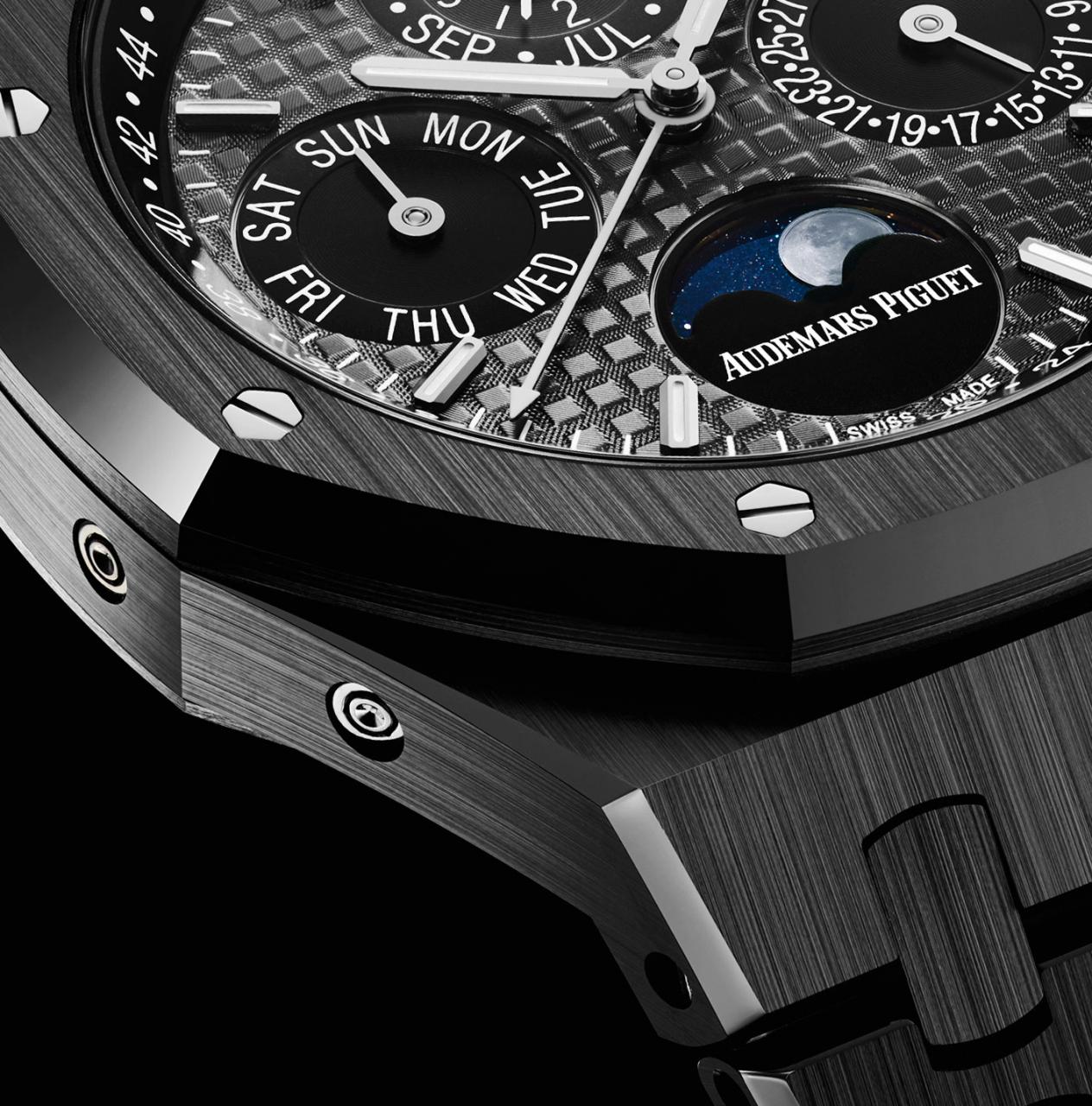
Historically an important complication for Audemars Piguet, the ceramic perpetual calendar is powered by the calibre 5134, a movement based on the extra-thin calibre 2120/2121 found in the original Royal Oak of 1972.
In fact, the calibre 5134 is evolved from the calibre 2120/2802, the movement used for the 39mm Royal Oak perpetual calendar that was in production for some 30 years. The key difference in the new calibre being the addition of a 52 week indicator.

Price and availability
The Royal Oak Perpetual Calendar in black ceramic (ref. 26579CE.OO.1225CE.01) is priced at SFr85,000. It should be available in the second half of 2017.

